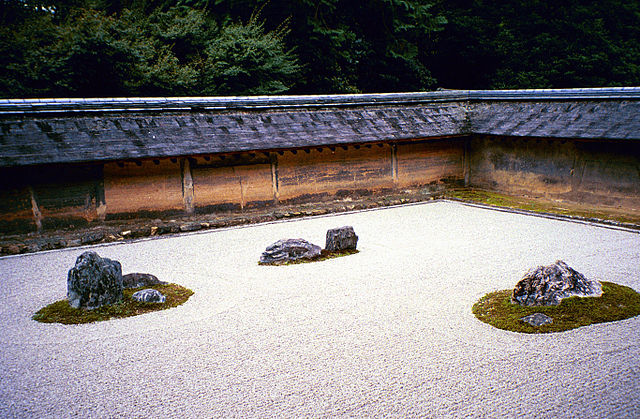
Ryoan-ji Temple
Kyoto, Japan

|
Ryoan-ji TempleKyoto, Japan |
The "dry" garden of Ryoan-ji, a Rinzai Zen temple, was constructed sometime in the late fifteenth century. Now an icon of Japan, the garden became popular only in modern times. Authorities differ about whether it was designed by Soami (1455-1525), or by another, unknown, designer.
The earthen wall which surrounds the garden dates from the seventeenth century. Before enclosure, the garden gave an unobstructed view to the pond and temple grounds below. The garden consists of fifteen stones, arranged on a bed of raked white sand in such a way that – it is said – no more than fourteen of the stones can be seen from any one angle (the art historian, J. Kidder, claims that he was able to see the edge of the fifteenth stone.)
Much has been written about the interpretation of this garden. Its visual pattern evokes a feeling of islands in the sea. Fifteen, the number of stones, symbolizes "completeness" in Buddhist numerology. My personal interpretation is that reality can never be known completely. Like the proverbial blind men examining an elephant, each of us at best sees only part of the whole.

|

|

|